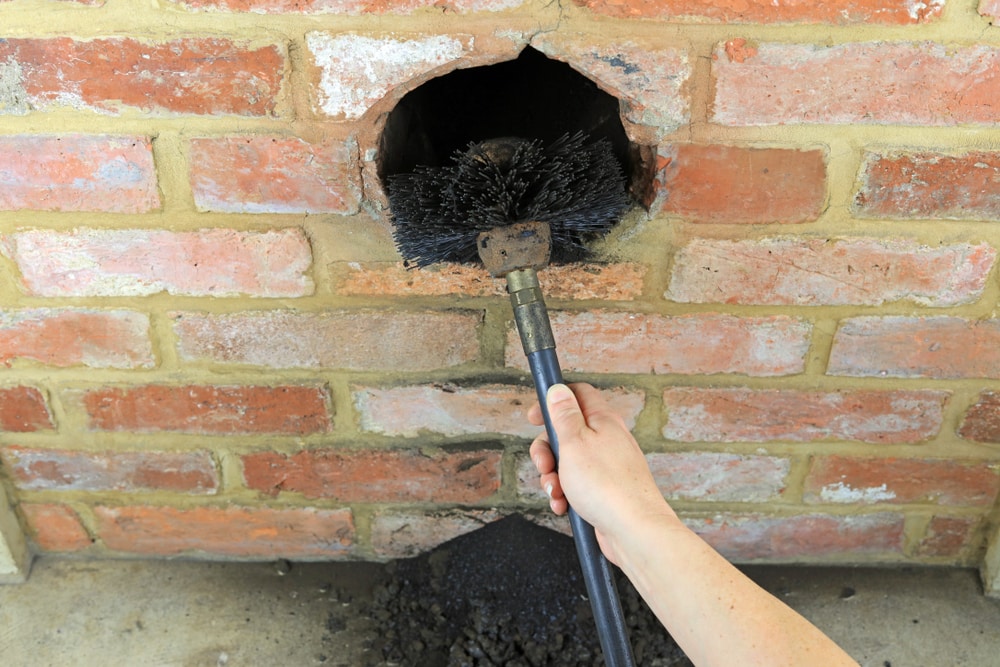The Complete Chimney Sweep San Jose Checklist for Year-round Security
The Complete Chimney Sweep San Jose Checklist for Year-round Security
Blog Article
Professional Guide to Chimney Cleaning: Everything You Required to Know
Overlooking chimney cleaning can lead to a host of troubles, from bad air flow to safety risks. From the devices called for to the step-by-step process included, a professional overview to smokeshaft cleansing offers an extensive review of just how to keep this important part of your home working successfully.
Value of Smokeshaft Upkeep
Keeping correct smokeshaft upkeep is important for guaranteeing the safety and performance of your home's home heating system. Over time, chimneys can build up creosote, a highly combustible compound that can lead to chimney fires if not cleansed on a regular basis.
Routine smokeshaft upkeep likewise aids in stopping obstructions that can block the circulation of air and gases, leading to inadequate ventilation and reduced home heating effectiveness. Additionally, a tidy chimney stops the accumulation of particles and nesting products from animals and birds, reducing the danger of blockages and guaranteeing proper airflow.
Tools and Supplies Needed

Step-by-Step Cleaning Refine

The very first step is to prepare the location around the fireplace by putting down safety sheets to protect against any soot or particles from soiling your home. Next off, open the damper to guarantee appropriate air flow throughout the cleansing procedure.
Using a flashlight, examine the chimney for any type of obstructions or accumulation. Eliminate any kind of noticeable particles such as nests, leaves, or creosote making use of a smokeshaft brush or vacuum cleaner specifically designed for chimney cleaning.
After clearing the debris, it's time to scrub the chimney walls. Attach the brush to extension rods and scrub the wall surfaces thoroughly to displace any kind of persistent accumulation. Adhere to up by vacuuming or brushing up the loosened up particles.
When the chimney is clean, inspect the smokeshaft cap and flue for any type of damage or signs of wear. Finally, clean and close the damper up the bordering area before examining the fire place to guarantee proper air movement.
Safety Preventative Measures to Adhere To
Ensure that the fire place and smokeshaft are totally amazing before starting any kind of cleansing activities to avoid burns or fires. Take into consideration working with an expert chimney move for detailed or high-risk cleansing tasks to ensure you could try these out the work is done securely and efficiently. By following these safety and security precautions, you can minimize threats and preserve a protected setting throughout the chimney cleansing process.
Tips for Maintaining a Tidy Chimney
Prior to initiating the smokeshaft cleaning procedure, it is vital to incorporate normal maintenance practices to make sure a basics well-functioning and clean smokeshaft. One idea for keeping a clean chimney is to set up routine assessments by a qualified chimney sweeper. These inspections can aid identify any type of potential problems before they escalate, conserving you time and money in the lengthy run. Furthermore, burning the right sort of wood, such as skilled woods, can assist reduce the accumulation of creosote in the smokeshaft. Creosote is a highly flammable compound that can result in chimney fires if not properly handled. One more important suggestion is to set up a chimney cap to prevent particles, animals, and wetness from getting in the smokeshaft. Regularly examining and cleaning up the chimney cap can ensure it operates properly. Always dispose of ashes appropriately and quickly after each use to prevent the accumulation of ash, which can limit air movement and raise the threat of chimney fires. By complying with these maintenance tips, you can delight in a risk-free and tidy chimney throughout the year.
Final Thought
In conclusion, routine chimney cleansing is important for keeping a secure and effective fire place or home heating system. By complying with the detailed cleaning process and taking needed security preventative measures, you can ensure that your smokeshaft works properly and lowers the risk of fire risks.
Over time, smokeshafts can build up creosote, a very combustible substance that can lead to chimney fires if not cleaned up regularly. The primary tools needed for chimney cleansing consist of a smokeshaft brush, chimney poles, a vacuum cleaner, safety equipment such as handwear covers and goggles, a flashlight, and a strong ladder. The smokeshaft brush is crucial for removing creosote build-up, while the smokeshaft rods aid in expanding the reach of the brush to clean up the entire smokeshaft size - Chimney Sweep San Jose. By having these tools and products all set, you can take on chimney cleansing effectively and safely, preserving the correct performance of your chimney and making visit site certain a secure setting in your home
Before launching the smokeshaft cleaning process, it is important to include regular upkeep methods to guarantee a clean and well-functioning chimney.
Report this page